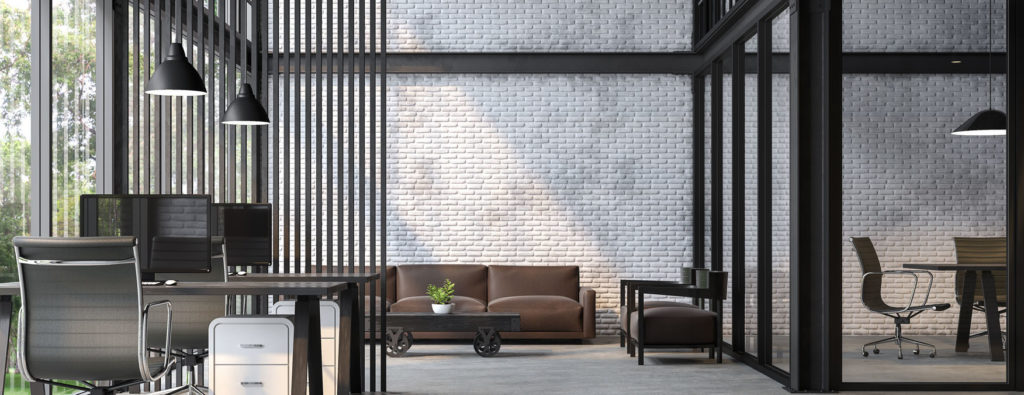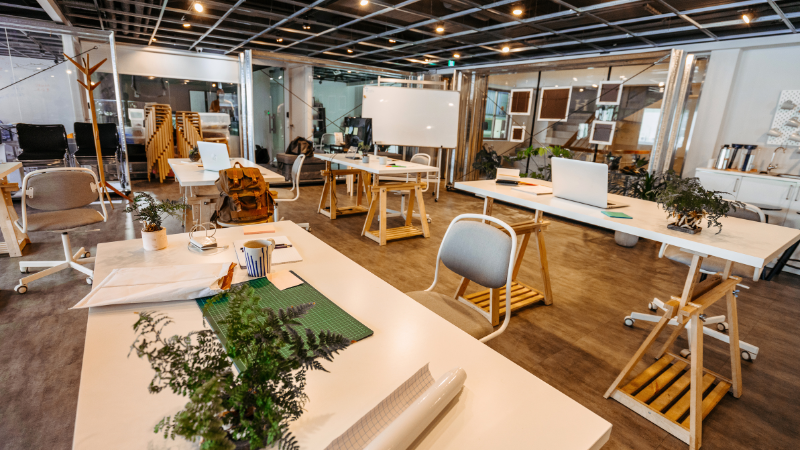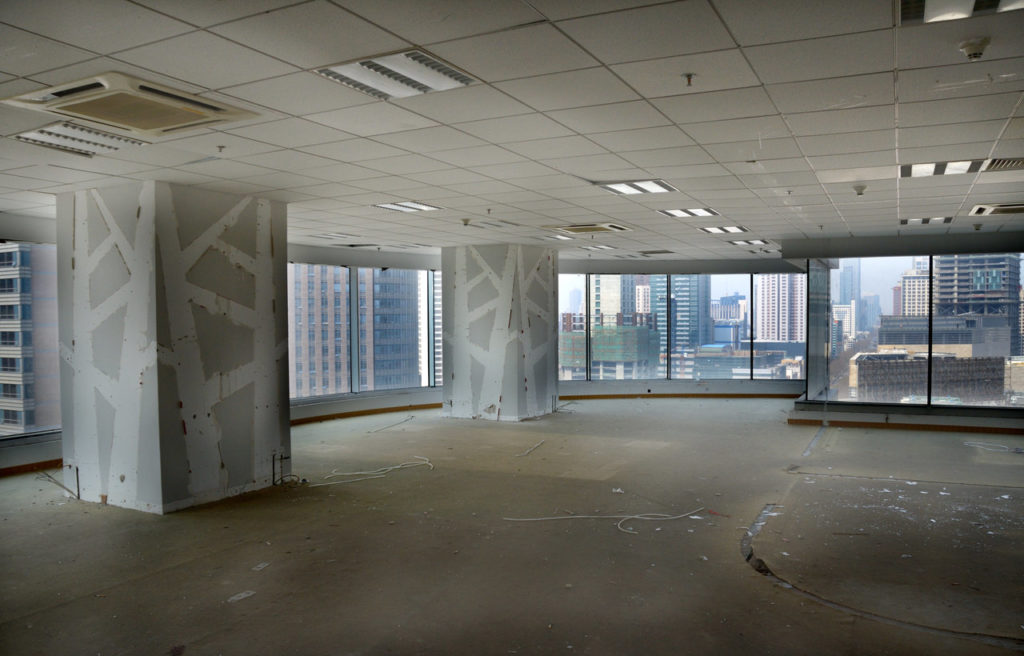
Smart Office Technology You Should Know About
Smart Office Technology You Should Know About
Written by Chicago Office Movers on . Posted in Office Renovation

Smart office technology is designed to improve workflow in today’s companies. Offices integrate high-tech gadgets and advancements to help employees work smarter, better, and faster. The technological frontier is vast, but certain smart office technologies are making a big splash.
Also known as the digital workplace or responsive workspace, the smart office is here to stay. A wide range of technology is utilized to the max, ensuring the work environment is intelligent and fully capable of adapting to meet the ongoing needs of employees.
The goal behind smart office technology is to automate routine tasks normally performed by human staff, thereby freeing up time for employees to tackle the work that technology is not yet capable of doing. As a result, businesses squeeze out more from employees while keeping them happy.
Smart office technology spans from refrigerators that let employees know when the cheese has run out to voice assistants that promptly answer any questions put to them. Smart technology is diverse, and not all offices need every latest gadget to stay ahead.
1. Smart Climate Control Systems
The temperature preferences among office personnel vary widely. Some staff prefer a cool work environment, while others are most comfortable in a warm space. While pleasing everyone is difficult, if not impossible, smart HVAC systems give employees control right from the office.
The detection capabilities of the smart climate control systems home in on preferences, usage patterns, outdoor weather, and company calendars. This real-time information prompts the system to regulate indoor temperatures. Increased productivity and a boost in morale are linked with employee comfort.
2. Smart Lighting
Offices that aim to reduce their energy costs use smart lighting. Installing this technology can save companies up to 90 percent on energy bills. Smart lighting automatically adjusts based on how many staff members are in the workspace as well as the degree of natural light.
Companies that are intentional about their energy usage while also focusing on promoting an environmentally friendly image benefit from installing smart lighting. The technology helps businesses reduce their carbon footprint in the office—a win-win for the company’s image and the environment.
3. Digital Assistants
Digital assistants are gaining ground in the commercial space fast. Office assistants are used for booking conference rooms, initiating phone calls, or sending emails. Ooma’s Virtual Receptionist, for instance, is a practical replacement for a full-time employee and comes at a fraction of the cost.
Like traditional human receptionists, the digital version takes incoming phone calls and instantly directs them to the right staff member. It creates automated messages that provide callers with the company’s office hours and list of employees. Staff can also check messages from a mobile device.
Companies that incorporate digital assistants are better able to streamline customer service, since the technology supports both customers and employees. Customer satisfaction spikes when customers receive immediate assistance—and digital assistants are available to help 24/7, even during hours when businesses are closed.

4. Smart Collaboration Tools
The post-pandemic era has ushered in remote work. Collaboration remains vital to the health of businesses, making video conferencing software a must-have in smart offices. Virtual meetings appear crisper and sound comes through sharper with the use of high-quality webcams and video equipment.
Virtual whiteboard software is another crucial tool in smart offices. Remote and off-site employees are able to utilize this smart technology to participate in collaborations just as they would in person. Encrypted cloud servers, too, hold data, giving team members access to information at any time.
5. Smart Security Systems and Maps
Gone are the days of staff fumbling with key fobs and keycards. Today’s companies rely on smart security systems and access control systems. Employees enter and exit the building with advancements, like two-factor authentication, built-in fingerprint scans, or facial recognition.
Visitor management is likewise enhanced with mobile guest pass credentials, which guests can access through email or text. Digital maps accessed via smartphone are useful for helping visitors find their way around large office buildings and directing them to conference rooms or halls.
These five smart office technologies improve the way employees work. While it’s expedient to have a wide range of technologies in the office, companies are encouraged to start the transition to a smart office gradually. Determine the needs of staff and what updates should be prioritized.
Ask employees what current technology is the most frustrating and which smart technology would provide the solution. Assess the company budget and choose an upgrade that will offer the biggest impact now and in the future. Choose flexible technology when business growth is expected.
Company leaders may also foresee adding offices or relocating to a newer facility. Keep these factors in mind, too, when deciding to implement possible smart technology solutions. If your company is moving, you’ll need a commercial mover with a track record for excellence, like Chicago Office Movers.
A corporate relocation is a significant event, one that needs a team of professionals to see it through to completion. At Chicago Office Movers, our dedicated crews will help your company leaders plan the move, securely pack all office goods, and unpack the items so your team resumes operations quickly.
Our office movers are licensed, trained, and experienced to ensure complete customer satisfaction. To meet the demands of business customers, we offer comprehensive services, which include short- and long-term storage options, paperwork storage, customizable add-on services, and service and insurance contracts.
Whether you are moving lab equipment, sensitive electronics, IT systems and server rooms, or cubicles, Chicago Office Movers will manage the entire move while staying on schedule and within budget. Our trucks feature climate-controlled spaces and lift gates to protect fragile office goods.
There’s a reason Chicago Office Movers continues to be trusted by prestigious area businesses: our commitment to quality during every phase of the office relocation.
When your company has plans to move locally, long-distance, or internationally, call our Chicago, Illinois, location at 312-244-2246 (CHI-CAGO) or fill out a form for a free estimate.
Contact Us
Related Services
- Corporate Moving
- Commercial Moving
- Reliable Commercial Storage
- Specialty Commercial Moving
- Furniture Assembly
- Movers for Office Renovation
- Machinery Moving
- Library Moving
- Lab Moving
- Server Room Moving
- Office Movers in Rosemont, IL
- Commercial Moving in Bolingbrook, IL
- Commercial Movers in Naperville, IL
- Commercial Movers in Des Plaines, IL
- Commercial Moving Services in Aurora, IL
- Schaumburg Office Movers
- Commercial Moving Services in Oakbrook, IL
- Commercial Movers in The North Shore
- Elk Grove Village Commercial Movers
- Furniture, Fixtures and Equipment Services
- Moving Company in Lincolnshire, IL
- Professional Movers in Downers Grove, IL
- Moving Company in Chicago, IL





 Contact Us
Contact Us





 2. Collaborative Furniture
2. Collaborative Furniture





